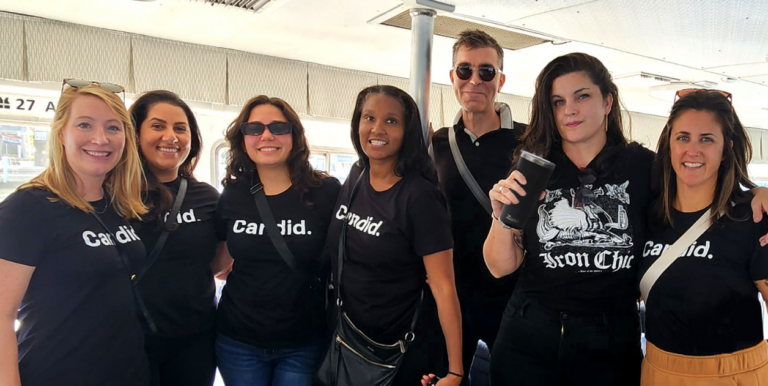Prioritizing the real people behind demographic data

Full disclosure: I’m biased in favor of nonprofits on the subject of grant applications and reporting. As a career fundraiser, I’ve worked in various roles at Candid, starting as a development associate in 2013 and working my way up to vice president of influence (the division in which our development department is housed).
Today, I’m still responsible for overseeing work to raise nearly $9 million in contributed revenue to fund Candid’s operations. Over the last decade, I’ve watched an increasing number of current and prospective funders require demographic data as part of their grant application processes. The sector’s evolving push towards collecting more data is, overall, a good thing, especially if it can help support transparent and data-driven decision making across the sector. But as data collection increases, we need to be sure to center the people behind the data points in our processes. The entire sector would be better positioned for success if we collectively prioritize the people behind the scenes completing applications and represented in the demographic data funders are collecting. Let’s dig in to why.
Prioritizing the data collectors
Grant applications are notoriously time-consuming and labor-intensive. They’re also duplicative, with research in 2021 from the Technology Association of Grantmakers showing grant application forms share 39% of the questions asked of nonprofit applicants.
The development team at Candid—let’s call them data collectors—is asked to fill out approximately 100 demographic surveys a year for grant applications. We’re proud of the diversity of representation across our staff and board members at Candid, and we know this data is crucial to support informed decision making. For example, the Environmental Grantmakers Association uses this data to help its members identify funding gaps for organizations led by and/or serving Black, Indigenous, and people of color. But the way funders ask for it—in custom ways and formats—creates a huge administrative task for nonprofits, and prevents the sector from having standard, comparable data.
Candid is lucky to have a well-resourced development department to comply with these requests. But a quick search on Candid’s GuideStar shows there are more than 700,000 nonprofits that operate with $50,000 or less in revenue. Their capacity to manage the significant administrative work that applying for grant funding requires is limited. And since funders often do not make the demographic data they collect publicly available, nonprofits can’t reuse this information in other grant applications.
To reduce the burden on nonprofits—and get the information we need to provide valuable insights across the sector—we launched Demographics via Candid early last year. The initiative enables nonprofits to submit their demographics on their publicly available profile on GuideStar, just once, freeing up time to focus on their missions. It also makes this standardized data available to the sector at large, guiding more informed decision-making and transparency.
Recognizing the people demographic data represents
Candid currently collects demographic data through our nonprofit profiles on race and ethnicity, gender identity, sexual orientation, and disability status. The demographic data that we, alongside our nonprofit peers, collect and provide represents real, whole human beings. As data collectors ourselves, we know that to prioritize real people, we must be extremely thoughtful about the questions we ask and how we collect this information.
Failing to root demographic data collection in the people behind the numbers can result in excluding entire populations. When I was working in development, I was continuously surprised by funders who required information on gender but only offered two options: male and female in their grant applications and reports. This meant we were forced to erase the identities of our colleagues who identified as nonbinary.
To ensure we’re prioritizing the people represented by this data, Candid made refinements earlier this year to the way we collect data about race and ethnicity, incorporating feedback to provide options that better align with individuals’ identities. The way we collect data on gender identity also demonstrates our commitment to being thoughtful, inclusive, and accurate. The first gender identity question in our demographic survey offers four options: female, male, non-binary, and unknown or decline to state. The second question is about transgender status. As Cat Clerkin, senior director of insights, wrote last year: “Our data collection approach both 1) allows transgender individuals to be fully counted within their other gender categories (e.g., “woman”), and 2) treats cisgender (people whose gender identity corresponds with their sex assigned at birth) and transgender people equally by asking all participants to provide that information.” A more inclusive approach to data collection can only help the sector by providing more accurate and complete information.
Fostering a more people-centric sector
Candid is currently working with a leading researcher to uncover potential barriers within nonprofits to providing demographic data. Our aim is to better understand these challenges by having direct, honest conversations with the real people who collect and are represented by this data. We will share more as findings are available in 2024. In the meantime, we recently launched a new course to help nonprofits with demographic data collection.
Whether you’re a nonprofit, a funder, or a philanthropy serving organization, we share a common thread—a passion for and commitment to changing the world for the better. By grounding our work in the people behind the numbers, we remain focused on what’s important and better position ourselves for success.
For more information on Demographics via Candid and how to join as a partner, visit candid.org/dvc.






